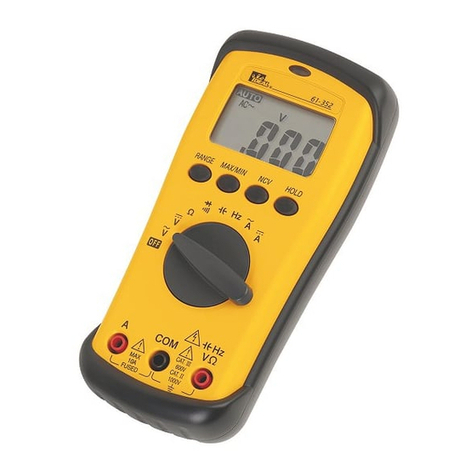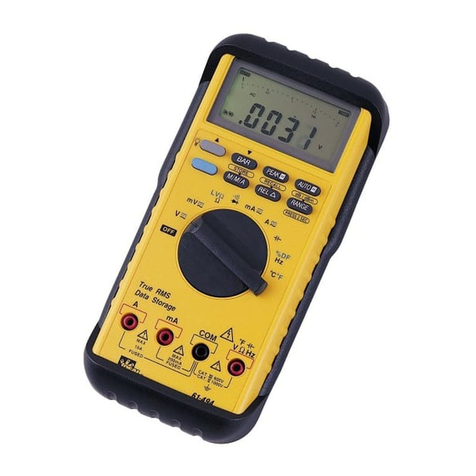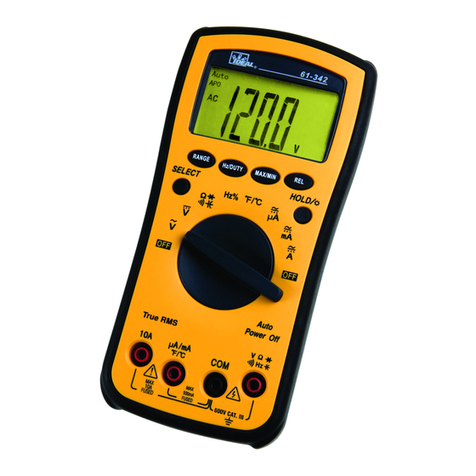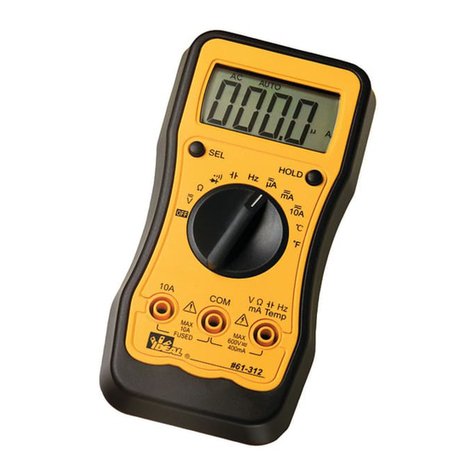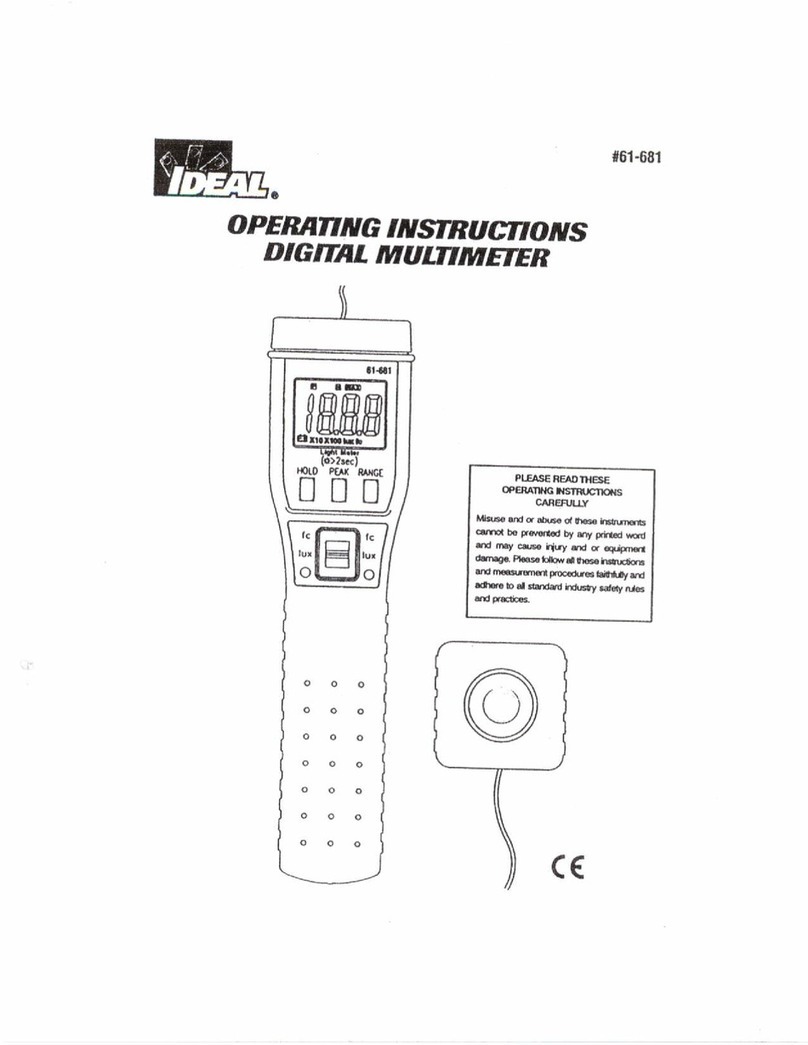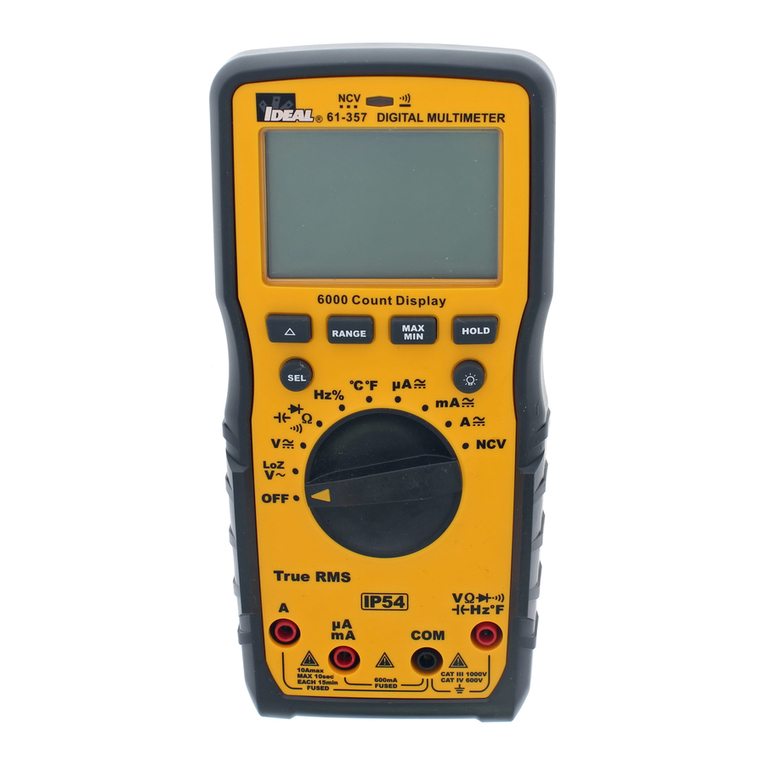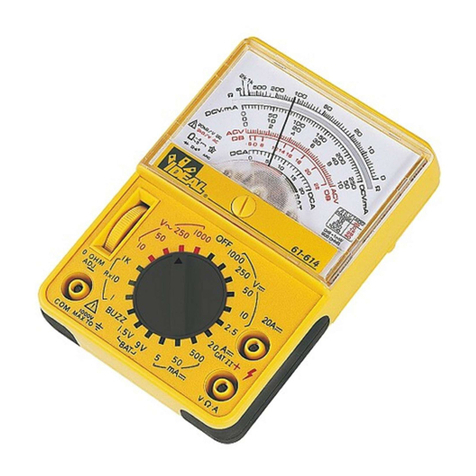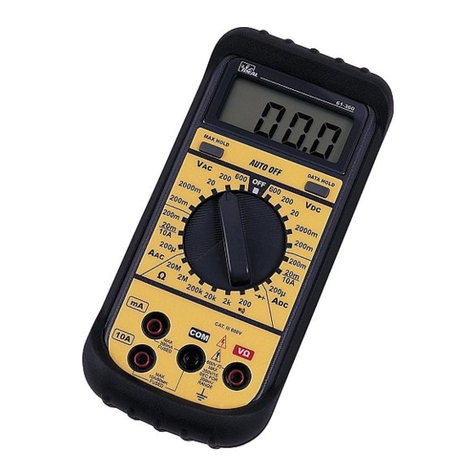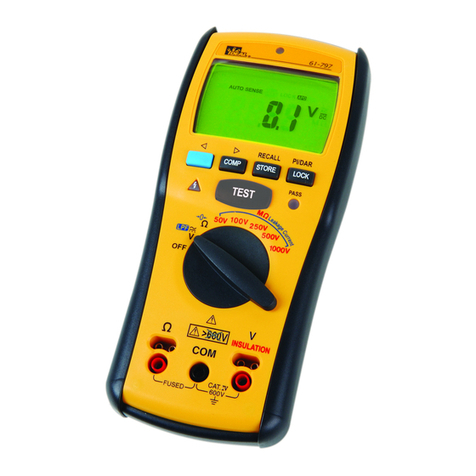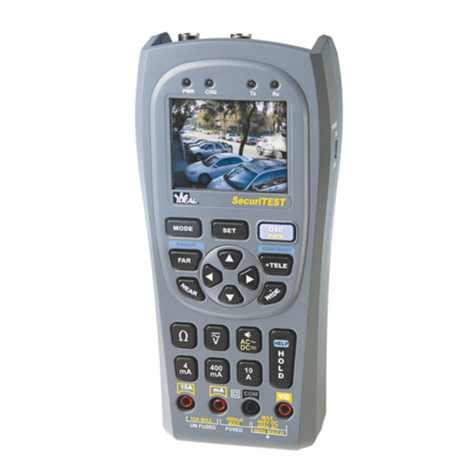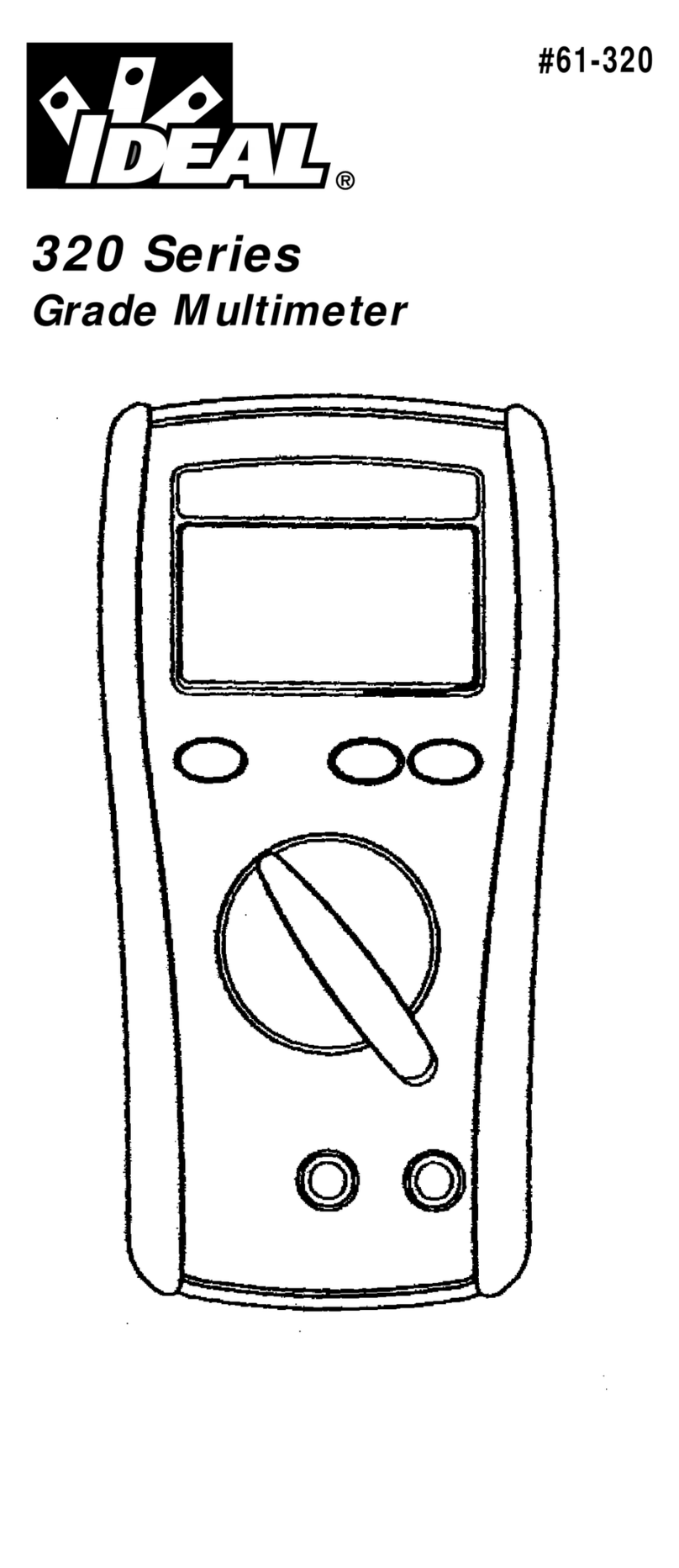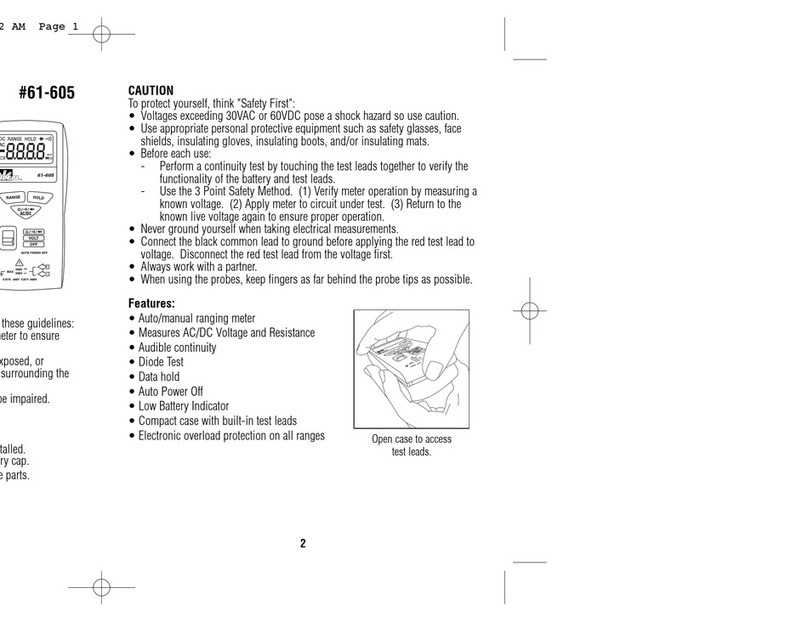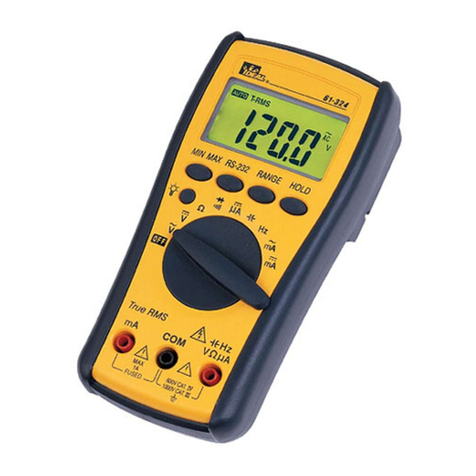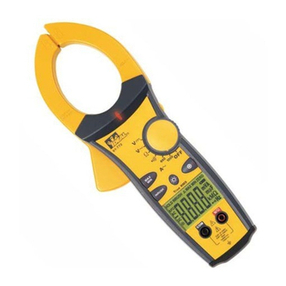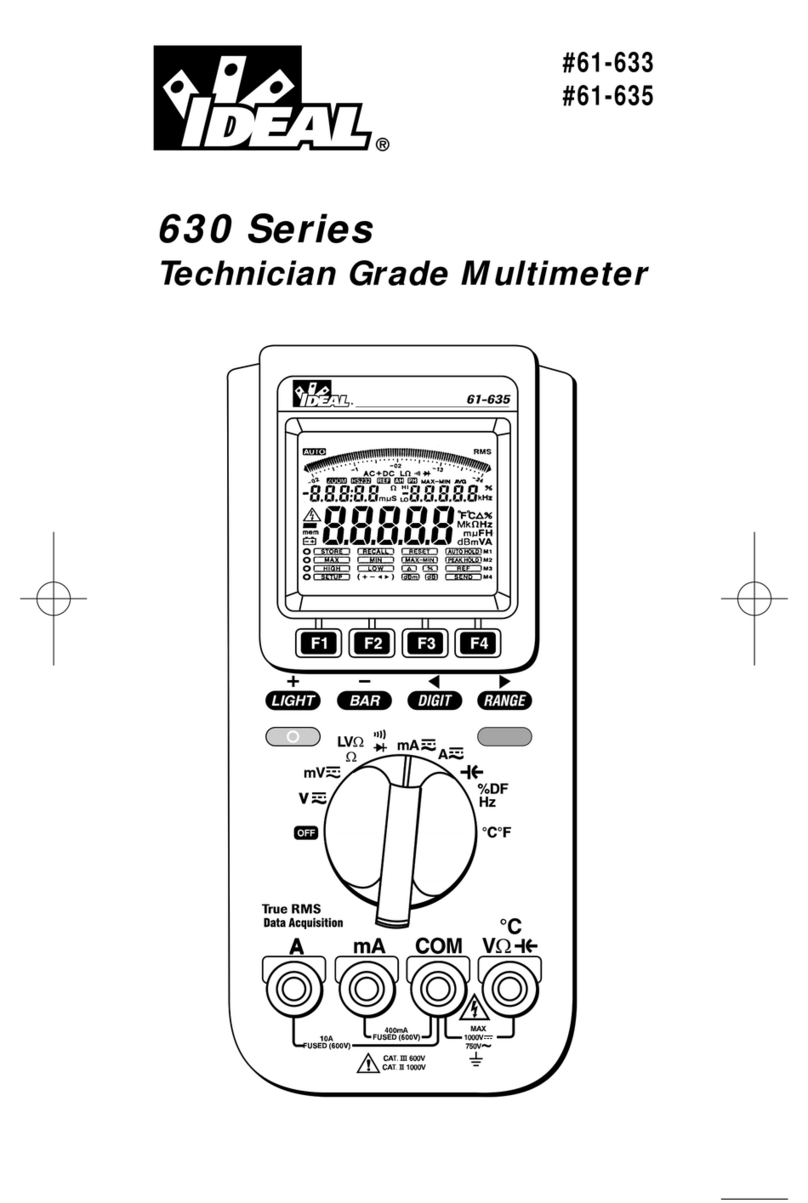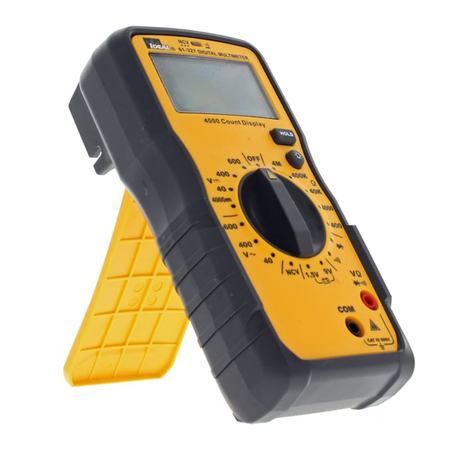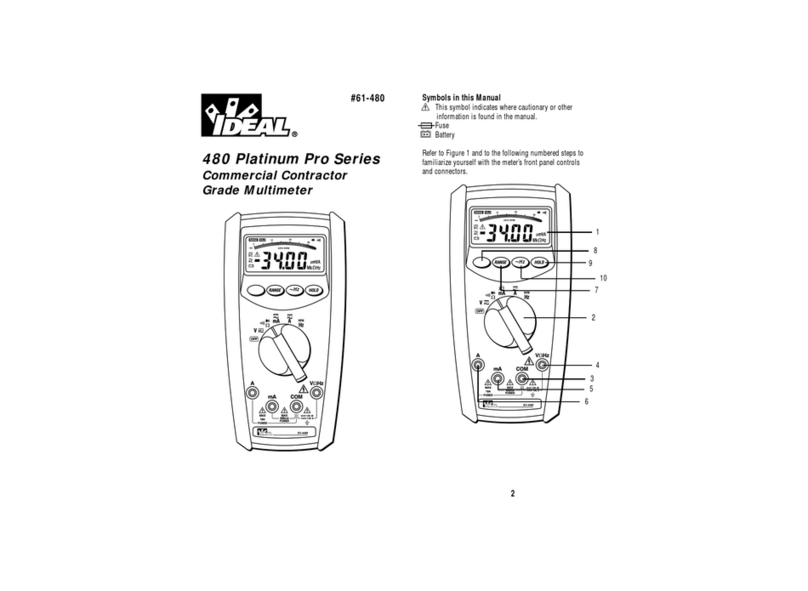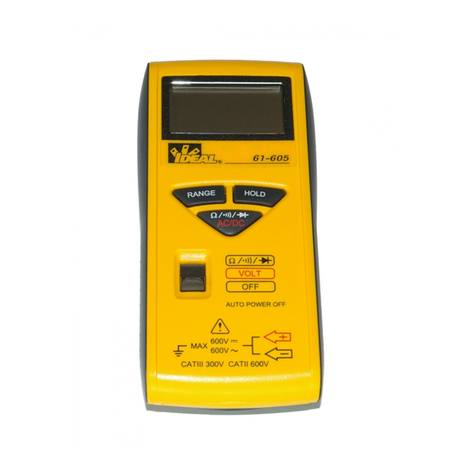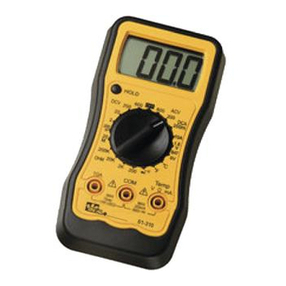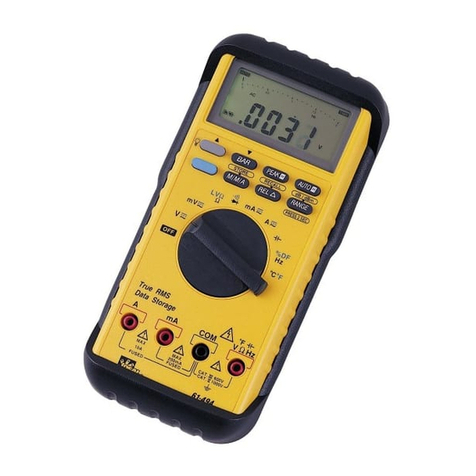43
1. Digital Display – The digital display has 4000 counts
LCD readout with 82 segments analog bar graph, auto
polarity, decimal point, “ ” AC, DC RANGE,
APO and unit annunciators.
2. Rotary Switch – Select the Function and Range desired.
3. COM Input Terminal – Ground input connector.
4. °C °F VΩHz Input Terminal – Positive input connector
for Volts, Ohms Frequency, and Temperature.
5. mA Input Terminal – Positive input connector for Amp
measurements (up to 400mA).
6. A Input Terminal – Positive input connector for Amp
measurements (up to 10A).
7. Range Switch, (Manual Range) – “Range” switch is
pushed to select manual ranging and to change ranges.
When “Range” switch is pushed on “Range” annunciator on
the LCD appears. Push “ Range ” switch to select
appropriate range to be used. Push “Range” switch and
hold 2 seconds to return to Autoranging.
8. REL (PEAK MIN/MAX) Switch – For resistance,
frequency, capacitance and temperature measurements, this
button enables the relative change function. When pressed
the value is stored, and all new measurements are displayed
as their relative difference from the stored value. In current
and voltage measurements, this button performs a peak
hold finction. The peak hold mode must be calibrated prior
to use. To calibrate the peak hold, press the key until the
meter displays “CAL”. Short the test leads to calibrate.
9. MIN/MAX Switch – Press this switch to toggle between
the minimum and maximum values. Pressing the button for
2 seconds to escape MIN/MAX mode.
10.Hold Switch – This switch is used to hold the measured
value for all functions. The held value is displayed along
with the annunciator. Measurements are made ,but the
display is not updated. This function can be used in
MIN/MAX mode or PEAK MIN/MAX mode.
11.Light Switch – This switch turns the backlight on and off.
12.Blue Switch – Push the switch to measure AC
Voltage/Current or DC Voltage/Current in the
Voltage/Current mode, or to measure Resistance or
Continuity or Diode in Ω/ / mode, or to measure
frequency or RPM in Hz/RPM mode.
WARNING!
1. DO NOT UNDER ANY CIRCUMSTANCES EXCEED THESE
RATINGS:
• Voltage is not to exceed 1000 Volts.
• Resistance, Capacitance, Logic and Continuity functions
are not to be performed on circuits capable of delivering
greater than 600 Volts.
• Current measurements are not to be performed on
circuits capable of delivering greater than 500 Volts
2. To avoid electrical shock hazards and/or damage to the meter:
• Do not exceed the voltage ratings for the meter. Use
caution when measuring voltage.
• Do not use during electrical storms. AC power sources
with inductive loads or electrical storms may result in
high voltage. High energy transients can damage meter
and present a dangerous shock hazard.
• Turn off power to the circuit or device being measured
before taking resistance and capacitance measurements.
Fully discharge all capacitors before measuring.
3. Ensure meter is in proper working order before using.
Visually inspect meter for damage. Performing a continuity
check can verify proper operation. If the meter reading goes
from overload to zero, this typically means the meter is in
proper working order.
4. Visually inspect leads for damage before using. Replace if
insulation is damaged or leads appear suspect.
5. Never ground yourself when taking electrical measurements.
Do not touch exposed metal pipes, outlets, fixtures etc.
Keep your body isolated from ground by using dry clothing,
rubber shoes, mats, or any other approved insulating
material. Keep your fingers behind the finger guards on the
probes. Work with others.
6. Before beginning all unknown measurements, set meter to
highest possible range.
7. Before breaking a circuit for testing, turn off the power to the
circuit. When disconnecting from a circuit, disconnect the
hot lead first, then the common lead.
8. Disconnect the meter from the circuit before turning off any
indicator, including motors, transformers, and solenoids.
H
H
